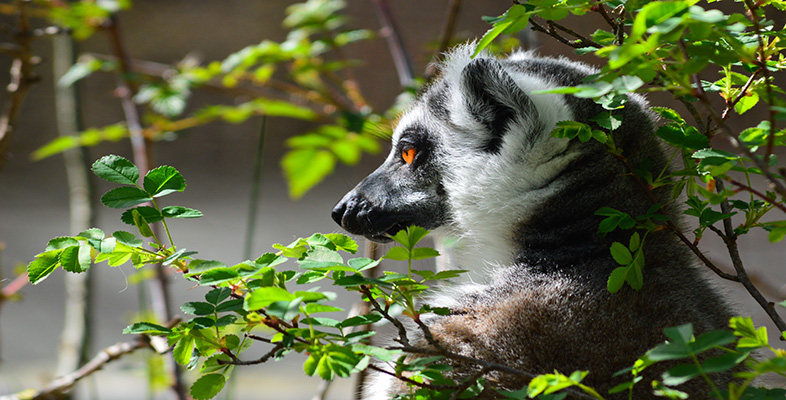5.4 Indris and sifakas
Both indris and sifakas are unusual amongst lemurs in that they are active largely by day. Leaves are their primary food. They have a specialised form of locomotion, best described as 'vertical clinging and leaping' and the leaps they can take, using their powerful legs, can be up to 10 m. DA describes the bounding movement of sifakas when they are compelled to come to ground. (If you go back to the previous video sequence that shows this strikingly white species - the so-called silky sifaka - bounding along on the ground, between 04:23 and 04:50.)
Sifakas coexist in families [p. 239]. Such groups are very variable in composition, with between one and 13 members. Females normally stay within one group but males move between groups, though the precise degree of promiscuity amongst males referred to in LoM p. 239 is uncertain. Male mammals that mate with several partners often have features that maximise the chances of successfully impregnating any one female. For example, such species normally have relatively large testes. Producing a large amount of sperm reflects a high degree of sperm competition prevalent in that species. (Sperm 'compete' in the sense that only one will fertilise an egg of a particular female.) In fact, sifakas have relatively small testes, which may reflect the fact that some other competitive system operates between males. It may be that some males achieve success by producing chemical signals from their scent glands, which in some way, at present not understood, suppresses reproductive function in rivals.
